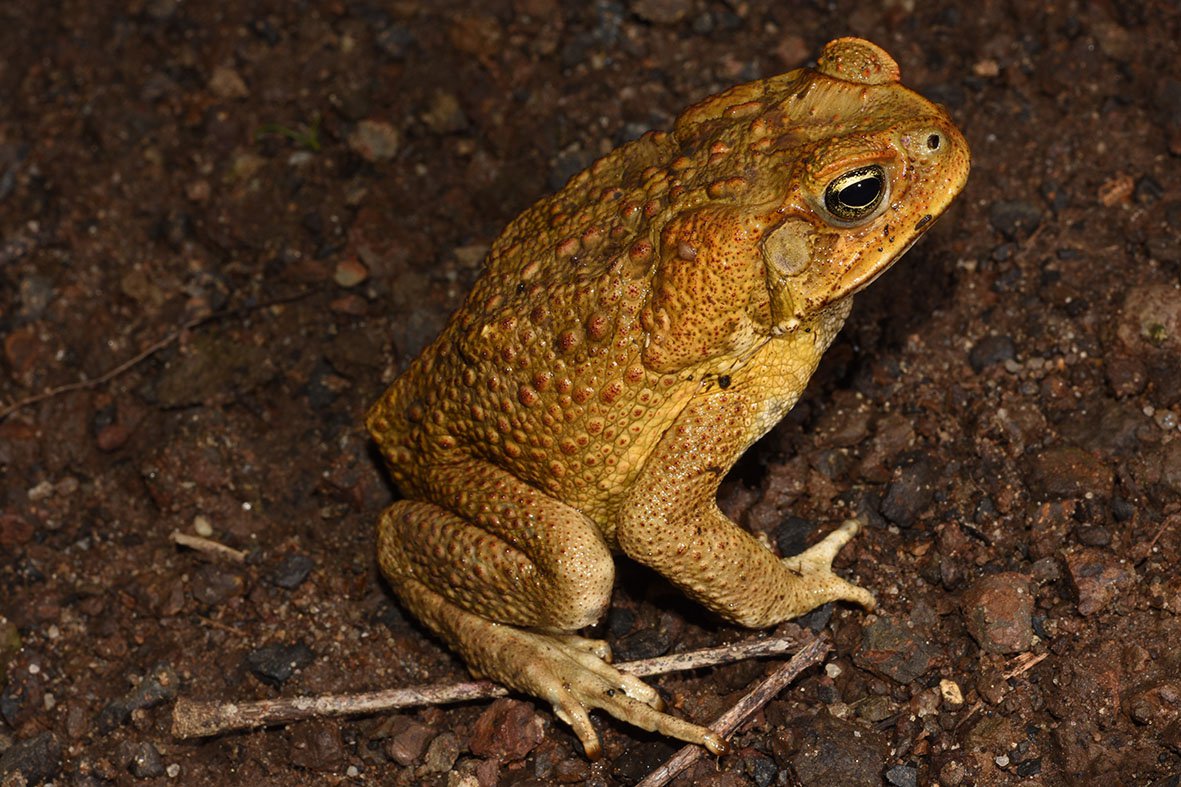1.Introduction
The Cane Toad (Rhinella marina) is one of the most notorious examples of an invasive alien species that has caused severe ecological imbalance in several parts of the world.
Originally native to Central and South America, it was introduced intentionally to control agricultural pests, but it soon turned into an ecological menace.
2. Origins and Global Introduction
Native Range: Central and South America.
Introduced to: Australia, the Caribbean islands, the Philippines, Papua New Guinea, and various Pacific islands.
Purpose of Introduction:
To control beetles and other pests that damaged sugarcane crops.
The idea was that the toad would feed on the pests and protect crops.
❌ Why the Experiment Failed
The cane toads did not eat the cane beetles, which lived high on the sugarcane stalks, beyond the toads’ reach.
Instead, they multiplied rapidly and fed on native insects and small animals.
Their introduction turned into one of the world’s most infamous cases of biological mismanagement.
3. Physical Characteristics and Toxic Defenses
Size: Adult cane toads measure about 10–20 cm, with some exceeding 25 cm in length.
Appearance: Thick, warty skin; broad head; and large body.
Distinctive Feature:
Possess large parotoid glands behind the eyes.
These glands secrete bufotoxins, a potent toxin that can kill predators such as snakes, lizards, and small mammals.
Toxicity Impact:
Native predators unfamiliar with the toxin die upon contact or ingestion.
Even domestic pets and humans can be affected if exposed to the toxin.
4. Adaptability and Invasive Success
Cane toads are extremely adaptable, which explains their success in spreading.
Key Adaptations
Physiological flexibility: Survive in both wet and dry climates.
Tolerance: High resistance to heat, cold, and dehydration.
Reproductive success:
Females can lay up to 30,000 eggs in a single breeding cycle.
Rapid breeding ensures large population growth in a short period.
Evolving traits at invasion fronts:
Studies show individuals at the expanding edge of the invasion front have longer limbs and greater stamina, aiding faster spread.
Habitat adaptability:
Found across farmlands, wetlands, gardens, roadsides, and urban areas.
5. Ecological Impact Across Continents
Disruption of Food Webs:
Cane toads eat anything they can swallow—insects, small vertebrates, and carrion—competing with native species for food.
Predator Decline:
Their bufotoxins poison native predators such as monitor lizards, snakes, and marsupials, leading to sharp declines in those populations.
Loss of Biodiversity:
By displacing native fauna and altering ecological balance, they contribute to local extinctions and ecosystem degradation.
Example – Australia:
Introduced in 1935, they now occupy much of northern Australia.
Native species like quolls (marsupial carnivores) have suffered drastic declines.
Difficult Management:
Due to their vast numbers, wide habitat range, and toxic nature, eradication or control is extremely difficult.
6. Management and Control Measures
Mechanical Removal: Manual collection, though limited in scope.
Biological Research: Scientists are studying possible biocontrol agents, but no safe or effective solution has yet been found.
Public Awareness: Educating communities to avoid harming native species while controlling toad populations.
Habitat Modification: Limiting breeding sites (like stagnant water) to reduce population growth.
7. Broader Lessons and Ecological Significance
The cane toad case serves as a global warning about the risks of introducing non-native species for pest control without adequate ecological assessment.
It highlights the complex interdependence of ecosystems and the unintended consequences of human intervention.
The incident underlines the importance of:
Environmental Impact Assessments (EIA) before species introduction.
Adherence to the Convention on Biological Diversity (CBD) and national biodiversity policies.
8. Key Exam-Oriented Facts
| Aspect | Details |
|---|---|
| Scientific Name | Rhinella marina |
| Native Range | Central and South America |
| Introduced To | Australia, Pacific Islands, Caribbean, Philippines |
| Purpose of Introduction | Pest control in sugarcane plantations |
| Defensive Mechanism | Bufotoxin secreted from parotoid glands |
| Impact | Decline in native predators, biodiversity loss |
| Reproductive Capacity | Up to 30,000 eggs at a time |
| IUCN Status | Least Concern (globally), but invasive in many regions |
| Symbol of | Ecological disruption due to invasive species |
9. Conclusion
The cane toad’s story is a cautionary tale in environmental science and policy. What began as a pest-control initiative became an ecological disaster due to poor foresight and lack of scientific evaluation.
It underscores the critical need for sustainable, ecosystem-based approaches in agricultural and biodiversity management policies worldwide.






